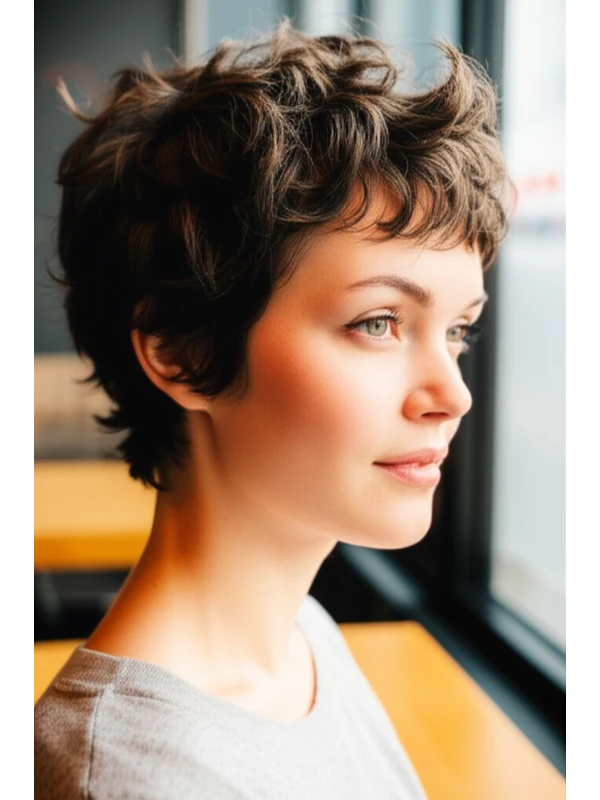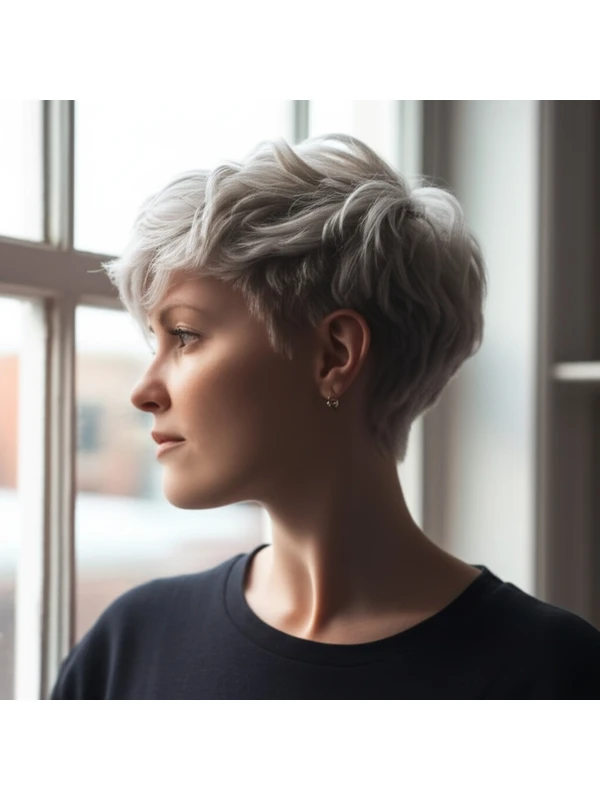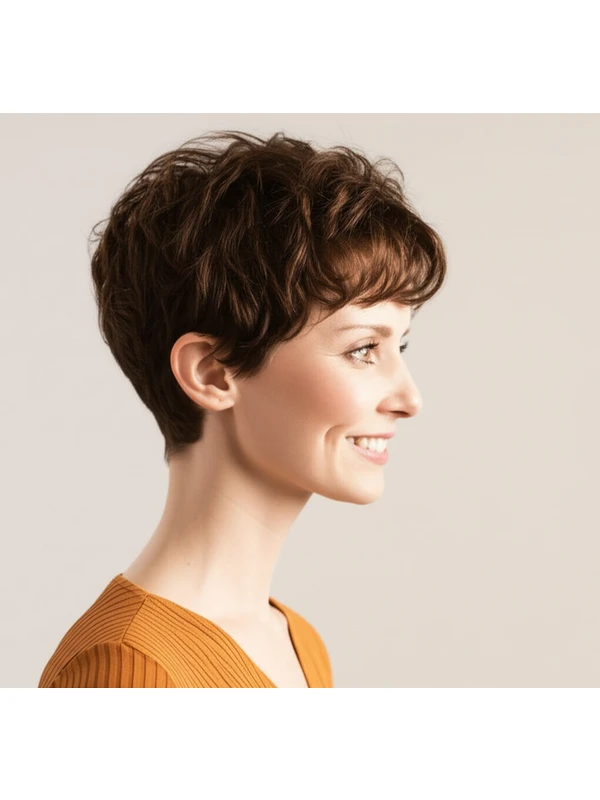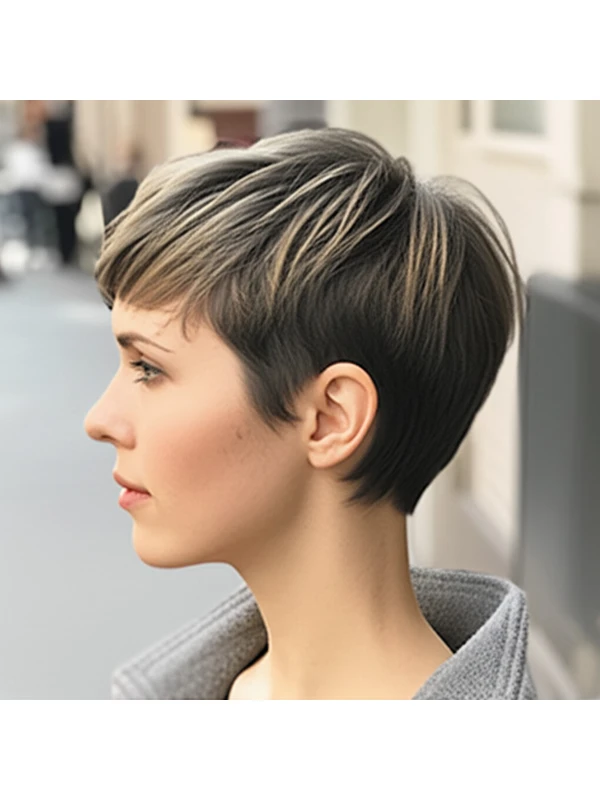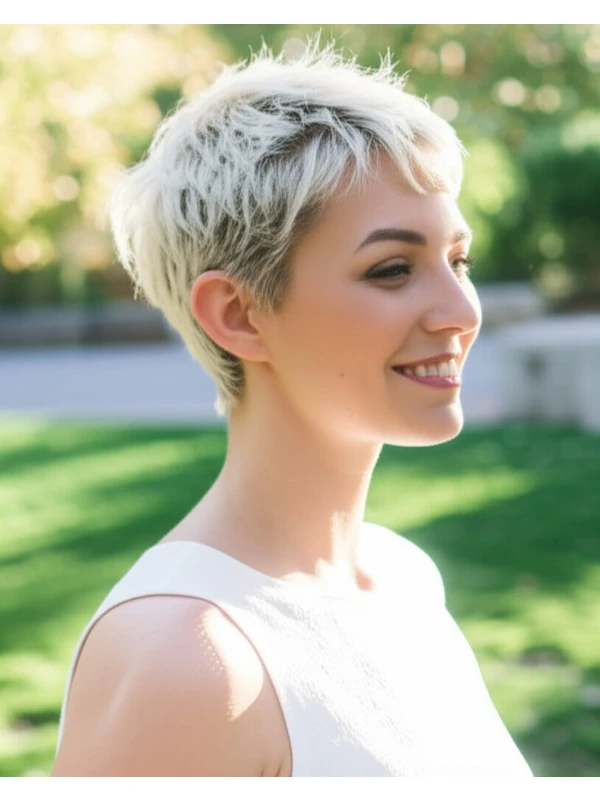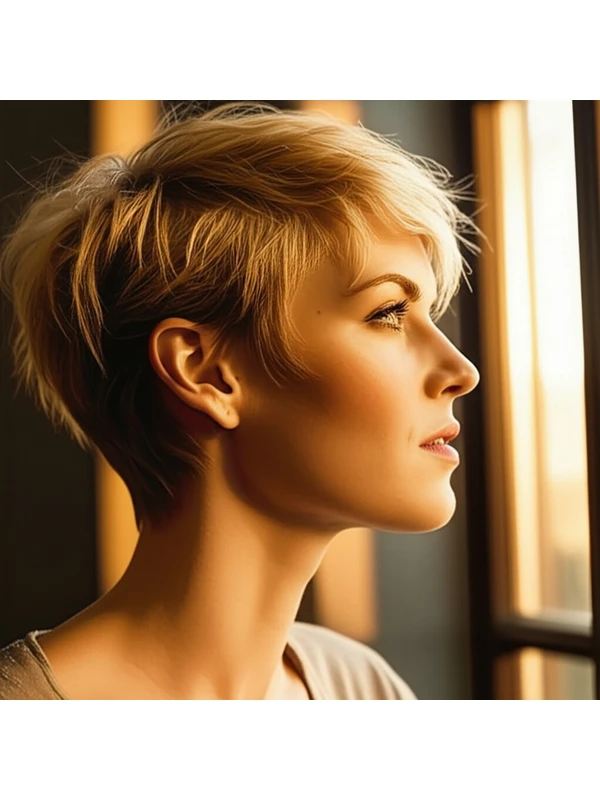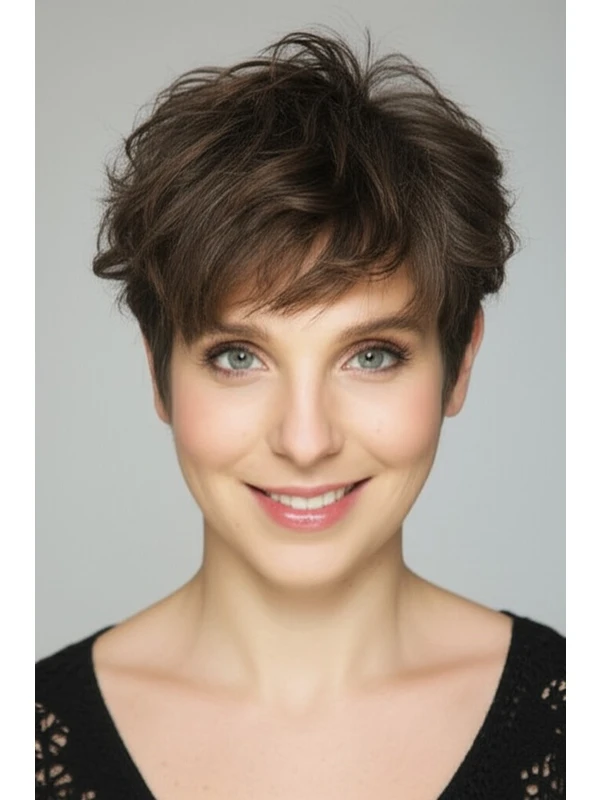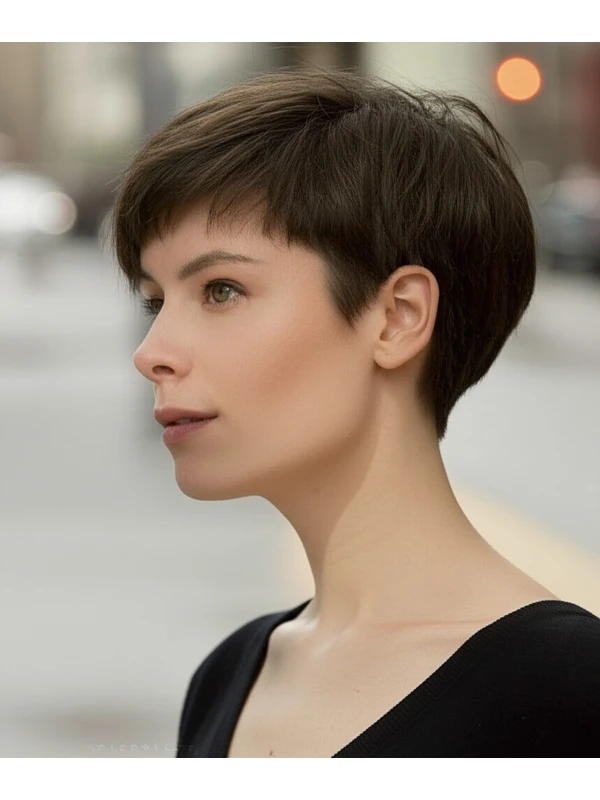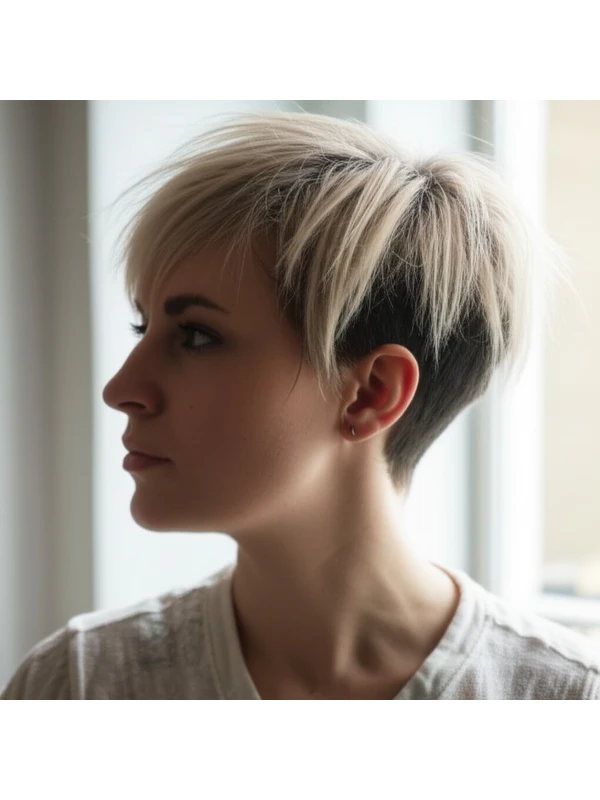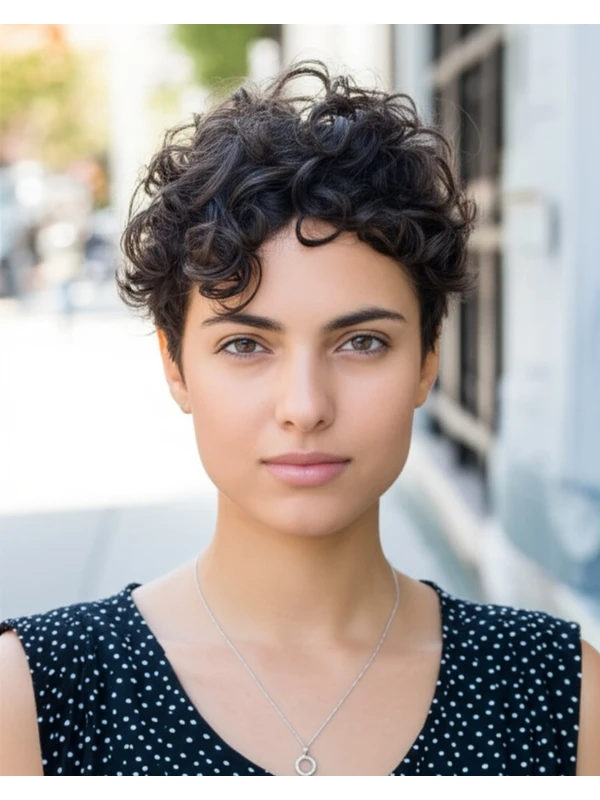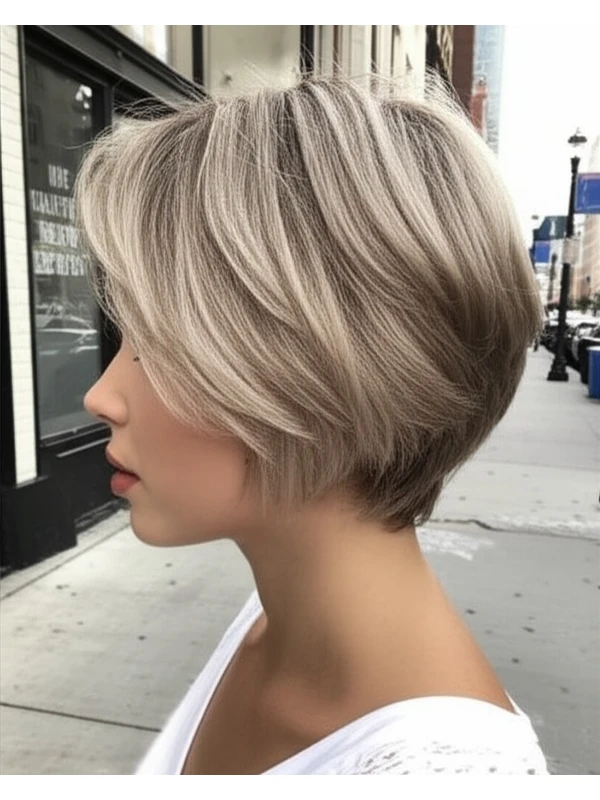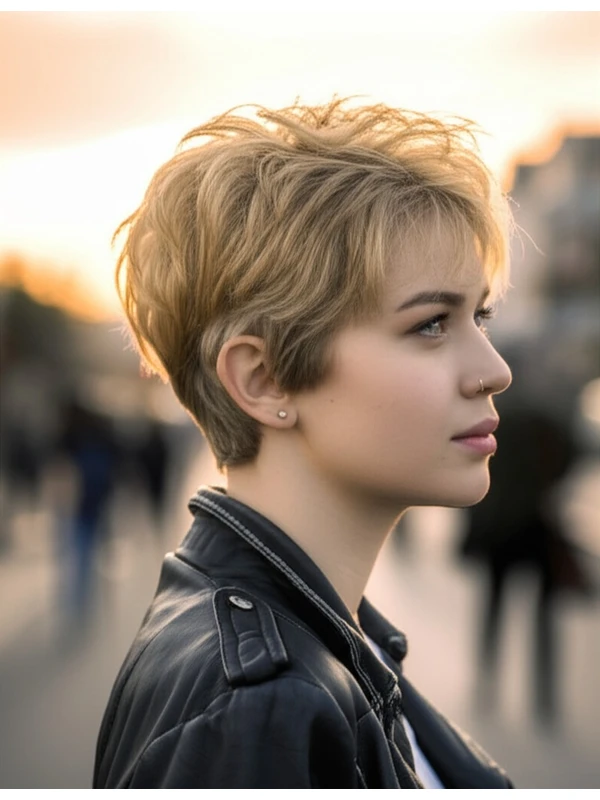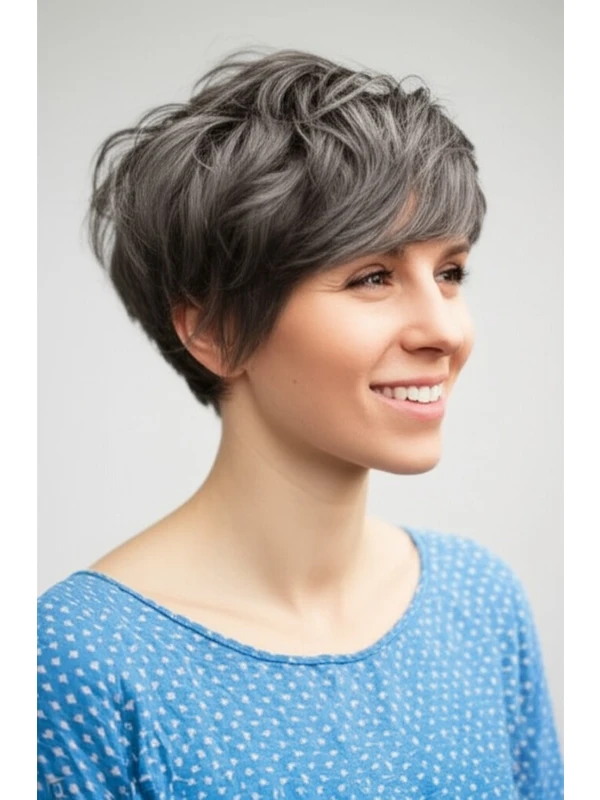#The Classic Pixie: A Guide to Effortless Chic
The pixie cut – it’s iconic for a reason! From Audrey Hepburn to Halle Berry, this short style has consistently proven its timeless appeal. But is it right for you? This guide breaks down everything you need to know about the classic pixie, from its history and face shape suitability to styling tips and grow-out strategies.
#1) Background & Definition: What Makes a Pixie a Pixie?
The classic pixie isn't just short hair; it’s a specific shape. Think of it as a close crop with layers that create volume at the crown, gradually softening into shorter lengths around the nape of the neck and sides.
- Geometry: The core is layered – often with stacked pieces to lift the roots. The overall shape should be asymmetrical or softly angled for modern appeal.
- Key Features: Short back and sides, longer layers on top (typically), a soft face-framing effect, and a generally playful yet polished vibe.
- Length Ranges: Generally, the shortest point at the nape of the neck is around 1/2 inch to 1 inch long. The longest pieces on top can range from 1 inch to just above the ear. Variations exist (see styling options below!).
- Alternative Names: Short crop, textured bob (if slightly longer), “French pixie” (often refers to a very sleek and precise version).
#2) Face Shape Fit: Finding Your Perfect Pixie Angle
The key to a flattering pixie is understanding how it interacts with your face shape. While almost anyone can wear a pixie, certain variations will be more harmonious than others.
- Oval: Lucky you! Oval faces are the most versatile and can pull off nearly any pixie variation – from sleek and severe to textured and tousled. A slightly longer fringe is particularly flattering.
- Round: A pixie with height at the crown helps elongate a round face. Avoid blunt, one-length cuts that emphasize width. An angled or side-swept fringe can also help slim the face.
- Square: Soften those angles! A layered pixie with soft edges and a wispy fringe is ideal. Avoid sharp lines and geometric shapes which will accentuate the squareness of your jawline.
- Heart: Balance a wider forehead with a side-swept fringe or longer, face-framing pieces. Volume at the back can also help balance a narrower chin.
- Diamond: Pixies that show off cheekbones are stunning on diamond faces! A slightly longer top and soft layering will highlight your features without adding unnecessary width.
- Oblong (Long): Create the illusion of width with layers and volume at the sides. Avoid styles that pull hair straight back, as this will emphasize length even more. A full fringe can also help shorten the face visually.
#3) Body Proportions & Height Guidance: Tailoring to Your Silhouette
Your height and body shape influence how a pixie looks on you – it's about creating balance!
- Petite: A shorter, choppier pixie adds visual interest without overwhelming a smaller frame.
- Average: Most variations work well for average heights. Consider the overall volume; too much can look unbalanced.
- Tall: Longer pixies with more length on top can help shorten your perceived height and create a softer silhouette.
- Narrow Shoulders: Volume at the sides of the pixie will visually broaden shoulders, creating balance.
- Broad Shoulders: Avoid excessive volume at the shoulder line; opt for a slightly tapered style that draws attention upwards.
- Short Neck: A shorter pixie with minimal height on top can help elongate the neck. Longer layers framing the face are also flattering.
- Long Neck: A pixie with more volume and length on top helps fill out the neck area, creating balance.
#4) Works Best With Hair Types & Densities: Adapting to Your Texture
The beauty of a pixie is its adaptability, but understanding your hair type is crucial for successful styling.
- Straight: Pixies look incredibly sleek and polished on straight hair. Easy to style!
- Wavy: Embrace the texture! A layered pixie enhances natural waves. Use texturizing products to define curls.
- Curly/Coily: Requires careful consideration of shrinkage. What looks like 1 inch in the salon might become 3 inches once dry! Consult with a stylist experienced in cutting curly or coily hair. Shorter lengths are often preferred to avoid bulkiness.
- Fine: Layers add volume and movement, preventing a flat appearance. Root lifting products are your friend!
- Medium: The most versatile density; styling options abound.
- Thick: Requires strategic layering and thinning techniques to remove weight and prevent the pixie from looking bulky.
#5) Styling Variations: From Sleek to Textured & Beyond
The classic pixie is a canvas for your personal style!
- Sleek vs. Textured: Sleek requires smoothing serums and precise styling; textured involves air-drying or diffusing with texturizing products.
- Middle vs. Side Part: A side part adds asymmetry and softens features.
- Fringe Variations: Blunt, wispy, angled, side-swept – the possibilities are endless!
- Occasion Styling:
- Casual: Air-dry with a texturizing cream for effortless cool.
- Office: Sleek and polished with a smoothing serum and minimal heat styling.
- Evening: Add volume at the roots, use hair wax to create definition, or incorporate subtle embellishments (like sparkly clips).
#6) Maintenance: Keeping Your Pixie Picture-Perfect
Regular trims are key!
- Trim Cadence: Every 4-6 weeks is typical.
- At-Home Routine: Gentle cleansing and moisturizing are essential.
- Heat vs. Air-Dry: Minimize heat styling to protect hair health.
- Product Checklist: Shampoo, conditioner, leave-in conditioner (especially for dry or curly hair), volumizing mousse (for fine hair), texturizing paste/wax, finishing spray.
- Estimated Daily Styling Time: 5-15 minutes, depending on desired style and texture.
#7) Grow-Out Roadmap: Evolving Your Look
The pixie evolves! Here’s what to expect:
- Months 1-3: The shape is most defined. Regular trims maintain the sharp lines.
- Months 3-6: Length starts to grow, potentially creating a slightly softer look. Talk to your stylist about blending layers or adding subtle face-framing pieces.
- Maintaining Shape: Between cuts, use styling products to keep the shape in check and avoid awkward stages.
#8) Color Pairings: Enhancing Your Pixie’s Dimension
Color can elevate a pixie!
- Cool Undertones (pink, blue): Icy blondes, ash browns, cool reds.
- Warm Undertones (yellow, gold): Honey blondes, caramel browns, copper reds.
- Low-Commitment Options: Balayage highlights or root shadows add dimension without a full color change.
#9) Season & Occasion Guide: Styling for Every Moment
- Spring/Summer: Lighter colors and textured styles are perfect for warm weather.
- Fall/Winter: Richer tones and sleek, polished looks exude sophistication.
- Work: Professional and understated – think a side-parted pixie with minimal texture.
- Weddings: Romantic waves or a slightly more voluminous style add elegance.
- Parties: Experiment with bold colors, playful accessories, or a dramatic updo (if length allows).
#10) Cost & Time: What to Expect at the Salon
- Salon Time: Typically 45-90 minutes.
- Price Range: Moderate to high – expect to pay more than for a trim but less than for a longer style.
#11) Pros & Cons: Weighing Your Options
Pros: Flattering on many face shapes, low maintenance (with regular trims), easy styling, highlights facial features, can be youthful and chic. Cons: Requires frequent salon visits, can be difficult to grow out gracefully, may not suit everyone's personal style.
#12) Salon Consultation Script: Questions to Ask Your Stylist
- "I’m interested in a classic pixie cut. Can you assess my face shape and hair texture to determine the best variation for me?"
- “How will this cut affect the volume around my [forehead/jawline/neck]?”
- "What styling products would you recommend for my hair type?"
- "Can you show me how to style the pixie at home after the appointment?"
- "What is the best way to grow out this style if I change my mind later?"
FAQs: Your Pixie Questions Answered
- Is a pixie cut hard to manage? It depends! While styling can be quick, maintaining shape requires regular trims.
- Can I dye a pixie cut myself? Root touch-ups are manageable; full color changes are best left to professionals.
- What if my hair doesn’t hold the style? Use volumizing products and consider layering techniques with your stylist.
- Will a pixie make me look older or younger? It can do either! A well-cut, modern pixie often looks youthful; an outdated style can have the opposite effect.
- Can I wear glasses with a pixie cut? Absolutely! The key is to ensure the frames complement the shape and layers of your hair.
- How long will it take for my hair to grow back if I don’t like the pixie? It takes time – expect at least 6-12 months to reach shoulder length.
